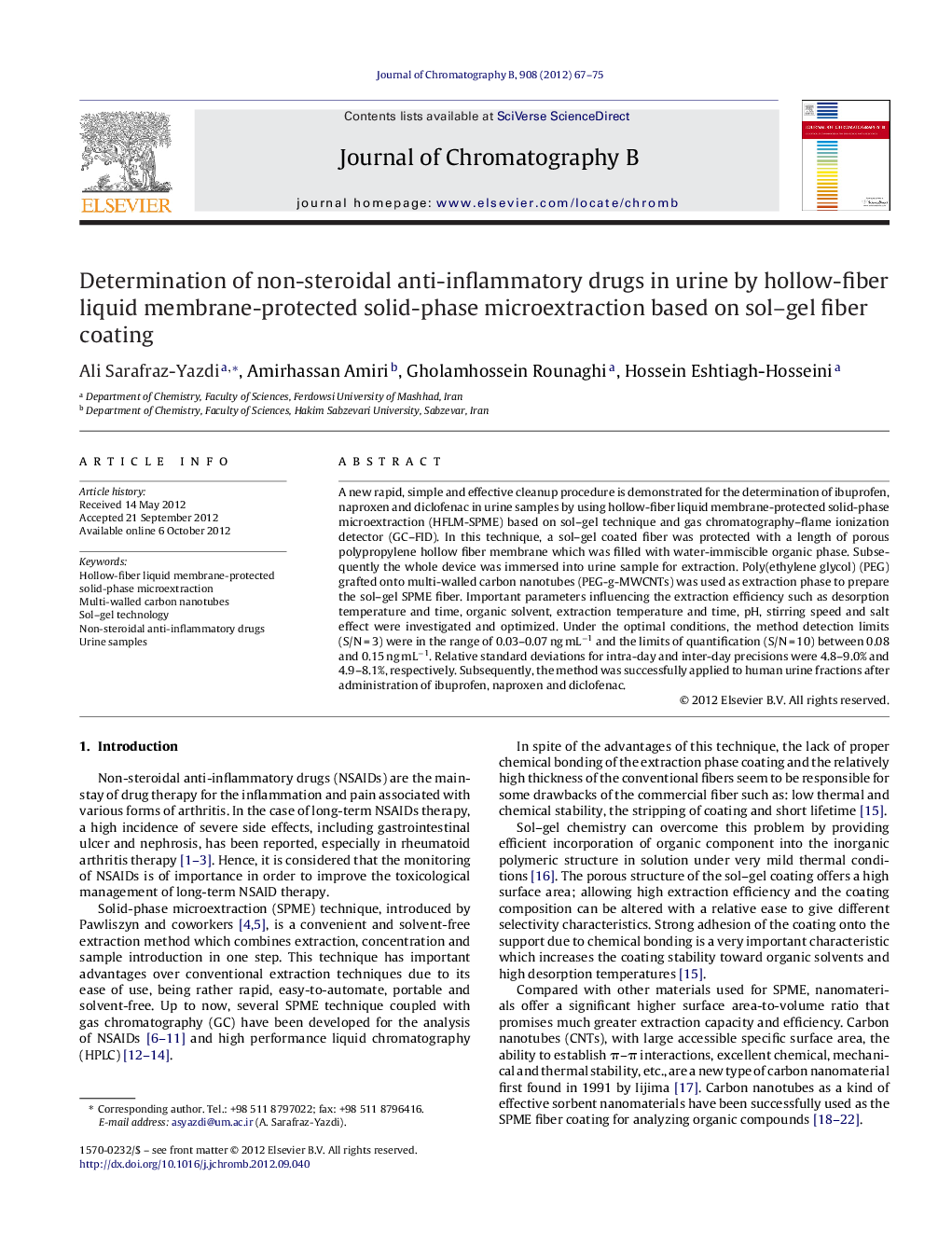| Article ID | Journal | Published Year | Pages | File Type |
|---|---|---|---|---|
| 1213686 | Journal of Chromatography B | 2012 | 9 Pages |
A new rapid, simple and effective cleanup procedure is demonstrated for the determination of ibuprofen, naproxen and diclofenac in urine samples by using hollow-fiber liquid membrane-protected solid-phase microextraction (HFLM-SPME) based on sol–gel technique and gas chromatography–flame ionization detector (GC–FID). In this technique, a sol–gel coated fiber was protected with a length of porous polypropylene hollow fiber membrane which was filled with water-immiscible organic phase. Subsequently the whole device was immersed into urine sample for extraction. Poly(ethylene glycol) (PEG) grafted onto multi-walled carbon nanotubes (PEG-g-MWCNTs) was used as extraction phase to prepare the sol–gel SPME fiber. Important parameters influencing the extraction efficiency such as desorption temperature and time, organic solvent, extraction temperature and time, pH, stirring speed and salt effect were investigated and optimized. Under the optimal conditions, the method detection limits (S/N = 3) were in the range of 0.03–0.07 ng mL−1 and the limits of quantification (S/N = 10) between 0.08 and 0.15 ng mL−1. Relative standard deviations for intra-day and inter-day precisions were 4.8–9.0% and 4.9–8.1%, respectively. Subsequently, the method was successfully applied to human urine fractions after administration of ibuprofen, naproxen and diclofenac.
► HFLM-SPME was proposed for the determination of NSAIDs in urine samples. ► PEG-g-MWCNTs was used as extraction phase to prepare the titania sol–gel SPME fiber. ► The HFLM-SPME method, integrating the advantages of SPME based sol–gel and HF-LPME. ► This method has a considerably low LOD and a relatively wide linear rang.
